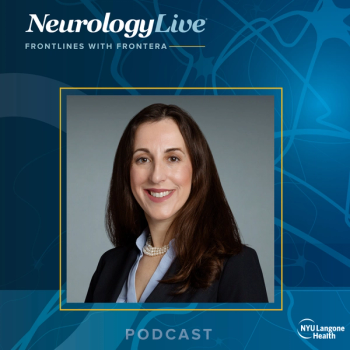
Low-Sodium Oxybate Improves Daytime Sleepiness and Sleep Architecture in Phase 4 Narcolepsy Trial
Key Takeaways
- Low-sodium oxybate improved daytime sleepiness and nighttime sleep architecture in narcolepsy type 1 and 2 patients.
- Significant reductions in Epworth Sleepiness Scale scores were observed, indicating improved daytime alertness.
Findings from the Jazz DUET study presented at SLEEP 2025 showed that low-sodium oxybate reduced daytime sleepiness and improved sleep parameters in patients with narcolepsy types 1 and 2.
Investigators recently presented data from the phase 4 Jazz DUET study (NCT05875974) at the
In the prospective, multicenter, open-label trial, 55 participants were enrolled in the narcolepsy cohort (NT1, n = 26; NT2, n = 29) and dosed with low-sodium oxybate to assess the agent's efficacy on daytime and nighttime symptoms. Among 34 completers (NT1, n = 16; NT2, n = 18), investigators recorded least-square mean (LSM) changes of −7.7 (SE, 0.9) in Epworth Sleepiness Scale (ESS), the primary end point, in the overall (P <.0001) cohort from baseline to end-of-treatment. Within the 2 cohorts, LSM changes of −6.5 (SE, 1.4) were observed among patients with NT1 (P <.0001), and changes of −8.8 (SE, 1.3) in NT2 cohort (P <.0001)
Presented by lead author Logan Schneider, MD, an adjunct clinical associate professor of sleep medicine at Stanford University, DUET included a screening period with a 2-week washout for current oxybate users, 8-day baseline period, 2- to 8-week treatment titration period, 2-week stable-dose period, 8-day end-of treatment period, and 2-week safety follow-up. In addition to ESS as the primary end point, key secondary end points included change in polysomnography parameters such as total shifts from deeper to lighter sleep stages, stage N3 sleep duration, and number of awakenings. Researchers also included Patient Global Impression of Change (PGIc) as an additional end point for overall narcolepsy disease.
All told, sleep architecture outcomes in the study showed fewer shifts from deeper to lighter sleep stages at end-of-treatment, with a LSM change of −13.1 (SE, 2.9; P <.0001) in the entire cohort, −13.9 (SE, 4.3; P = 0.0029) in NT1, and −12.3 (SE, 4.1; P = .0050) in NT2. Findings revealed that stage N3 sleep duration increased by 45.0 minutes (SE, 8.8; P <.0001) overall, with gains of 49.8 minutes (SE, 13.0; P = .0006) in NT1 and 40.8 minutes (SE, 12.3; P = .0023) in NT2. Additionally, researchers observed that the number of awakenings decreased by −3.2 (SE, 0.9; P = .0015) overall, −4.1 (SE, 1.4; P = .0056) in NT1, and −2.3 (SE, 1.3; P = .0771) in NT2.
In the study, most participants from the cohort (93.3%, n = 30) reported improvement in overall narcolepsy disease on PGIc, including 86.7% (n = 15) of participants with NT1 and 100% (n = 15) of participants with NT2. Overall, authors reported that treatment-emergent adverse events experienced by participants were consistent with the known safety profile of low-sodium oxybate.
In July 2020, the FDA approved low-sodium oxybate for the treatment of cataplexy and excessive daytime sleepiness in patients with narcolepsy. The approval was supported by data from a phase 3 trial that assessed the agent’s efficacy in 134 participants who received randomized treatment, and safety in all enrolled participants (n = 201). During the double-blind withdrawal period, participants randomized to placebo experienced 2.35 (IQR, 0.00-11.61) weekly cataplexy attacks compared with 0 (IQR, –0.49 to 1.75) in the low-sodium oxybate group. Additionally, significant increases in median ESS scores were observed in the placebo group (median, 2.0 [IQR, 0.0-5.0]) compared with those on active treatment (median, 0 [IQR, –1.0 to 1.0; P <.0001).2
REFERENCES
1. Schneider L, Ruoff C, Plante D, et al. Effectiveness and Safety of Low-Sodium Oxybate in Participants with Narcolepsy: Results From the DUET Study. Presented at: 2025 SLEEP Annual Meeting; June 8-11; Seattle, WA. ABSTRACT 0831.
2. Bogan RK, Thorpy MJ, Dauviliers Y, et al. Efficacy and safety of calcium, magnesium, potassium, and sodium oxybates (lower-sodium oxybate [LXB]; JZP-258) in a placebo-controlled, double-blind, randomized withdrawal study in adults with narcolepsy with cataplexy. Sleep. 2021;44(3):zsaa206. doi:10.1093/sleep/zsaa206
Newsletter
Keep your finger on the pulse of neurology—subscribe to NeurologyLive for expert interviews, new data, and breakthrough treatment updates.




















